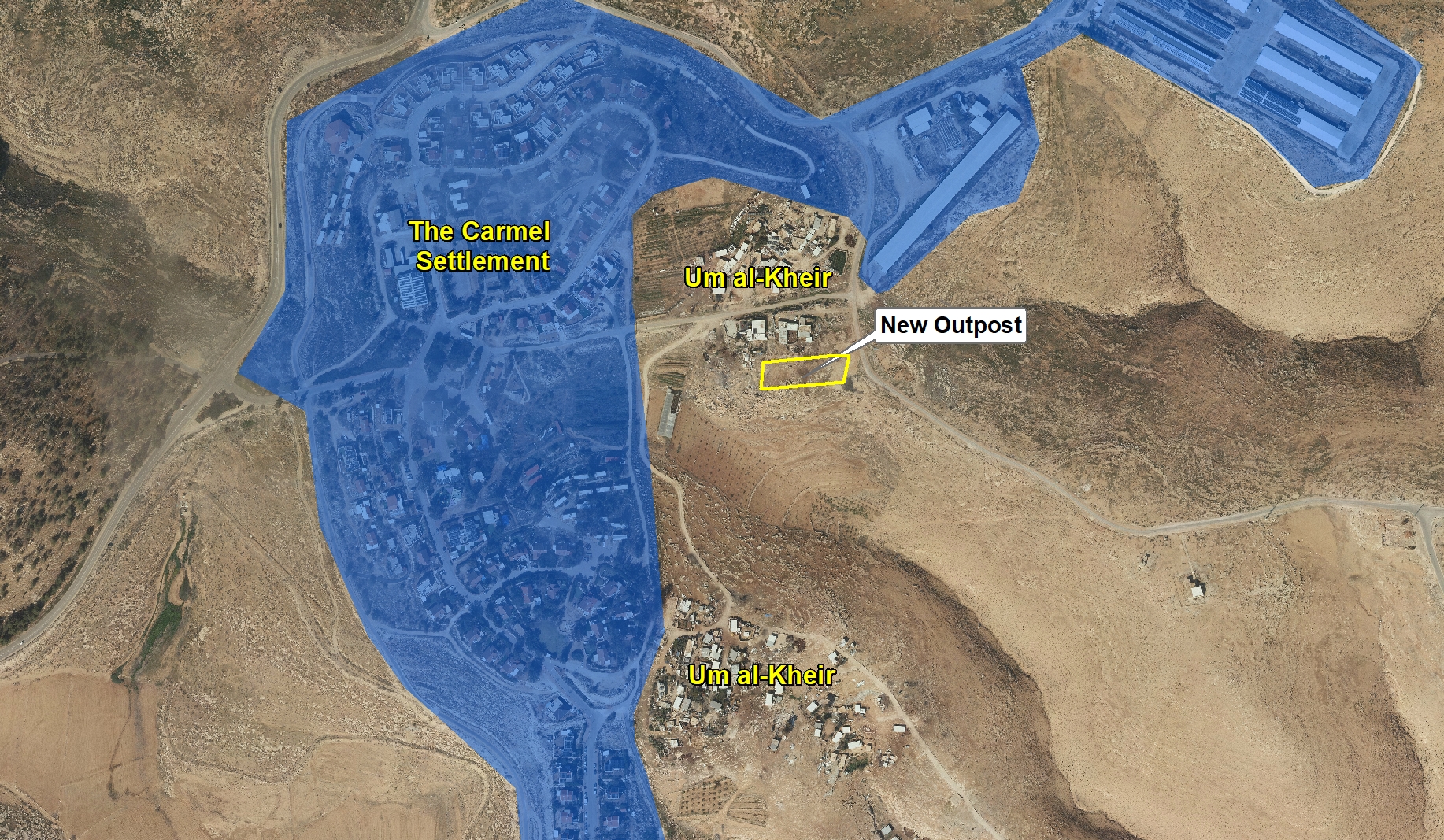The Civil Administration issued demolition notices on Oct. 28, 2025, for 13 Palestinian structures in the village of Umm al-Khair in the South Hebron Hills. This is the latest step in a prolonged and harsh campaign against the community.
The documents, titled “Notice Granting the Right to Submit Objections to a Demolition Order,” were served for structures that have stood for decades. Under the procedure, residents have 4 days to file an appeal in court to halt the demolition. If no appeal is filed, or if an appeal is denied, the administration may proceed with demolishing the structures.
Of the 13 notices, 11 concern residential homes, one concerns a household bathroom, and one concerns a greenhouse.

Background
Um al-Kheir is a Palestinian village of about 200 Bedouin residents. Their families originated in the Negev and were forced to leave their lands after 1948. They later migrated to the South Hebron Hills, where they purchased land and settled in Masafer Yatta during the Jordanian administration of the West Bank. Israel does not recognize the village as legal. The state refuses to issue building permits and considers all structures in the village “illegal.” According to OCHA, the United Nations Office for the Coordination of Humanitarian Affairs, Israel has demolished 56 structures in the village over the past 15 years.
In the early 1980s, Israel declared c. 4,000 dunams in the area as state land and allocated them to the Settlement Division for the establishment of the Carmel and Ma’on settlements. The Carmel settlement was built adjacent to the lands of Um al-Kheir. In 2005, the Higher Planning Council approved Plan 507/1 for Carmel, which expanded the settlement’s planned area to include about 2,200 dunams of surrounding open land. Around seven of those dunams lie within the village of Um al-Kheir itself, and on these 7 dunams the caravans were established. Under the plan, the area where the outpost was built is zoned for agricultural use, not for housing.
The Struggle of Umm al-Khair’s Residents
The demolition orders mark the latest chapter in a long campaign by settlers to drive the residents of Umm al-Khair from the land they have lived on since the 1940s.
In previous incidents, settlers from nearby unauthorized outposts repeatedly harassed and threatened residents of Umm al-Khair. In response, and with the assistance of Peace Now, the villagers obtained a restraining order against one of them, Shimon Attia, a settler from the illegal outpost of Havat Shorashim.
In July, another settler, Yinon Levy from the illegal Meitarim outpost, carried out infrastructure work for the nearby settlement of Carmel. At the end of one of those workdays, Levy shot and killed Odeh Hadalin, who was standing dozens of meters away and posed no threat. Levy was released from custody the following day.
In August, caravans were placed adjacent to the village in preparation for establishing a new illegal outpost. The residents, again with Peace Now’s help, obtained a temporary court order preventing the occupation of the site. However, on the eve of the Sukkot holiday, the same day Israeli hostages were released from Gaza, settlers violated the order and entered the caravans. Since then, they have continued to build and consolidate their presence in the outpost. Authorities have taken no action to stop the construction or remove the settlers.
Moreover, on Nov. 27, 2025, a coalition lawmaker, Tzvi Sukkot, visited the outpost to express his support.
The most recent development came with the Civil Administration’s issuance of demolition notices for 13 structures in Umm al-Khair, another blow to the village’s residents.


